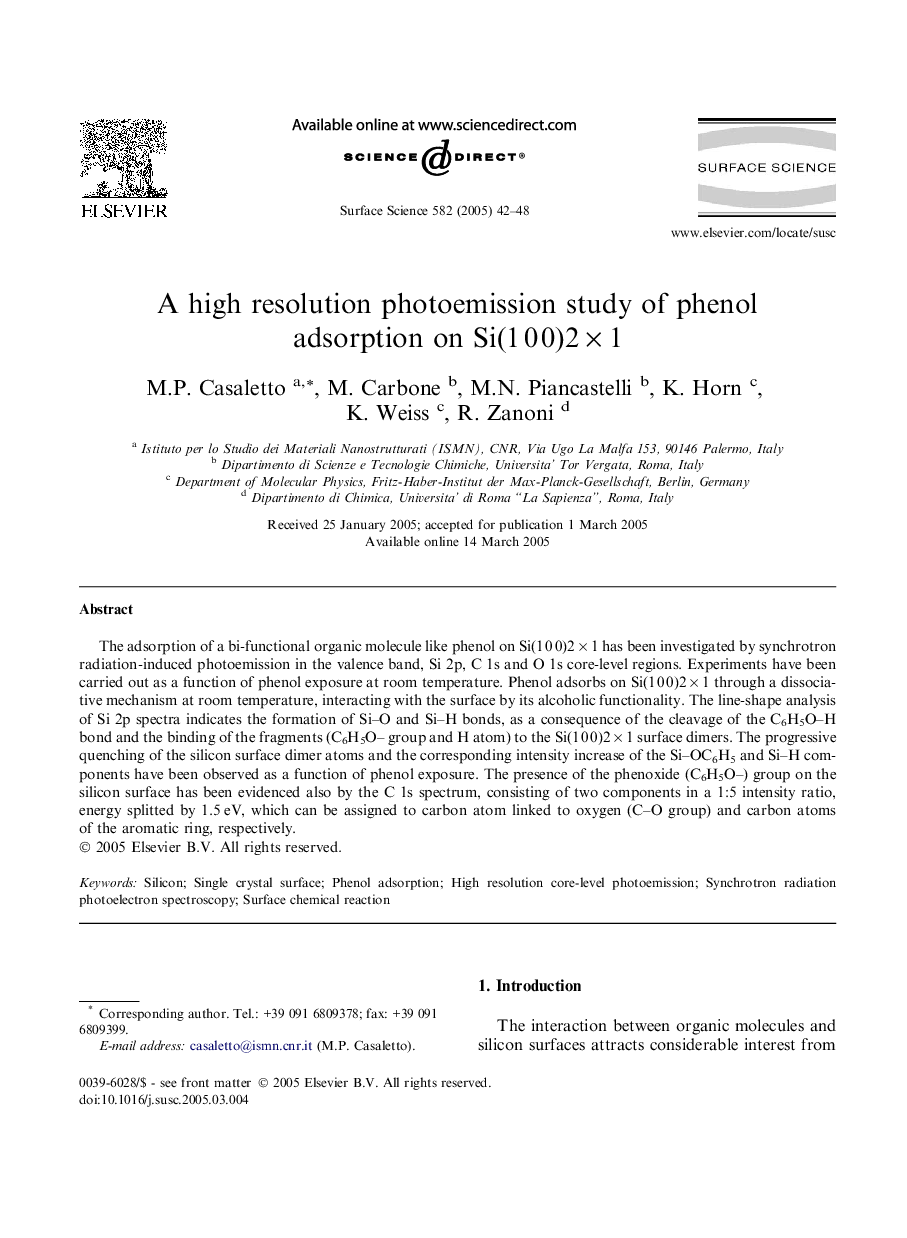| Article ID | Journal | Published Year | Pages | File Type |
|---|---|---|---|---|
| 9594848 | Surface Science | 2005 | 7 Pages |
Abstract
The adsorption of a bi-functional organic molecule like phenol on Si(1Â 0Â 0)2Â ÃÂ 1 has been investigated by synchrotron radiation-induced photoemission in the valence band, Si 2p, C 1s and O 1s core-level regions. Experiments have been carried out as a function of phenol exposure at room temperature. Phenol adsorbs on Si(1Â 0Â 0)2Â ÃÂ 1 through a dissociative mechanism at room temperature, interacting with the surface by its alcoholic functionality. The line-shape analysis of Si 2p spectra indicates the formation of Si-O and Si-H bonds, as a consequence of the cleavage of the C6H5O-H bond and the binding of the fragments (C6H5O- group and H atom) to the Si(1Â 0Â 0)2Â ÃÂ 1 surface dimers. The progressive quenching of the silicon surface dimer atoms and the corresponding intensity increase of the Si-OC6H5 and Si-H components have been observed as a function of phenol exposure. The presence of the phenoxide (C6H5O-) group on the silicon surface has been evidenced also by the C 1s spectrum, consisting of two components in a 1:5 intensity ratio, energy splitted by 1.5Â eV, which can be assigned to carbon atom linked to oxygen (C-O group) and carbon atoms of the aromatic ring, respectively.
Keywords
Related Topics
Physical Sciences and Engineering
Chemistry
Physical and Theoretical Chemistry
Authors
M.P. Casaletto, M. Carbone, M.N. Piancastelli, K. Horn, K. Weiss, R. Zanoni,
